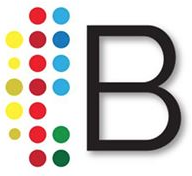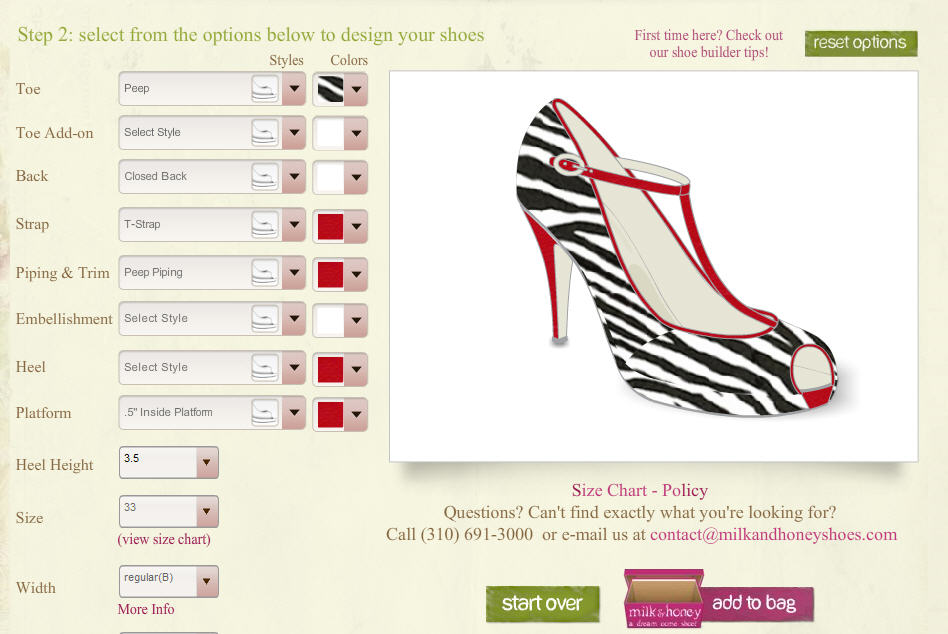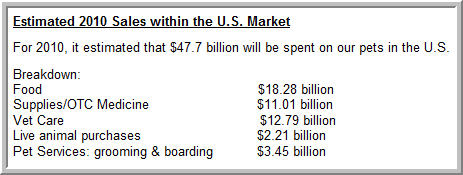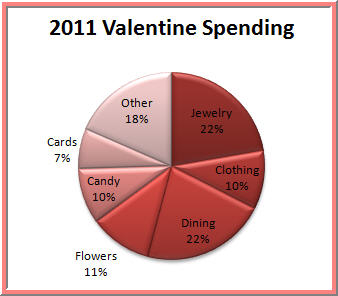Happy Monday! We're starting out the week by revisiting a post on our Facebook page which deserves its proper due on our blog too. We all know that companies are researching us as much as we do them, but as Charles Duhigg's NYT article titled "How Companies Learn Your Secrets" explains in excruciating detail, the extent to which retailers like Target can hone in on select life events based on shifting purchasing habits is, well, fascinating. We highly recommend devoting a solid 20 minutes of quality workload procrastination to reading the whole thing. Yes it's a bit long in parts, but stick with it through the obligatory rat-and-maze experiment because the case study on Febreze alone is worth the price of admission. Overall, depending on your metaporical empty-or-full-half-glass outlook when it comes to consumer psychology, you might come away a bit terrified, or you might want to try to cheat the system next time you buy groceries, or you might be jonesing to try that spiffy weight loss trick.
Business Research Meets…Purses?
While the bizologie authors all exhibit a weakness for Coach handbags, this entry is not a game of guess your clients’ income by who’s not wearing a fake. Recently I had an excellent interaction in a Coach boutique which I visited to exchange a bag, and the sales associates referenced an online consumer forum multiple times during my time there, e.g. “Oh I think the talked about this color on The Purse Forum. They’re major enthusiasts on The Purse Forum. They’re way ahead of the game on The Purse Forum”. This intrigued me, so the next day I visited TPF and found a market research gold mine. Now when most people use the term gold mine, they mean “everything I wanted in one spot.” That’s more likely the other gold analogy, the one involving pots and rainbows. TPF, in terms of business research, comes across as a literal gold mine, with a lot of nonrelevant (to business researchers that is) information to be found throughout, and the occasional vein of free-focus-group-qualitative-information-gold. These are serious Coach connoisseurs who are not only giving impromptu product reviews, but also candidly answering topics like: “Do you no longer like Coach? If, so, then why?” (Answer: Lots of them move on to higher price point brands like Hermes or LV). Or, “For those who own more than a handful of Coach bags, why do you buy? (Answer: Thrill of the hunt; they often re-sell their stash on ebay and purchase their new must have).
Obviously one could create an account, insinuate themselves into the forum’s culture, and ask incognito questions. And obviously the Coach employees are monitoring TPF, which begs the question of precisely who starts some of these more probing threads. Hence TPF (which also discusses scads of other handbag brands and other luxury goods) and other comparable consumer forums are definitely something to consider for people doing qualitative-type business research, especially for the aforementioned luxury/consumer goods. So long as the researcher is respectful of that community’s enthusiasm and expertise, they might find themselves a gold nugget or two.
Sunlight & Spending
It’s time for businesses to consider ditching those fluorescent bulbs in favor of sun lamps, because a scholarly study conducted by researchers at the University of Alberta and the University of Winnipeg in Canada, published in the November 2010 Journal of Retailing and Consumer Services, has some compelling statements on the matter. In the study titled, “The effect of weather on consumer spending,” the authors cited years of similar research which shows that- as we all know from our own lives- exposure to sunlight can improve our moods, and that people in a good mood are more likely to spend money. They then built on these studies to propose that, “the effect of weather – and, in particular, sunlight – on consumer spending is mediated by negative affect. That is, as exposure to sunlight increases, negative affect decreases and consumer spending tends to increase.”
After performing a series of mixed methods studies, they stated, “we find that participants exposed to artificial sunlight are willing to pay significantly more for a variety of products than participants exposed to regular lighting only, and that this effect is mediated by negative affect.” They went on to suggest that retailers should consider both incorporating natural lighting and/or artificial sunlight, and also increasing lighting levels on days in which the weather is bad in order to reduce negative feelings and increase spending.
On the flipside, the researchers acknowledged that they conducted their study during the cooler half of the year, and also considered that “the effect of more sunlight on retail sales becomes negative when the weather is already warm (e.g., during the summer).” This just reinforces my hypothesis that the only stores seeing increased sales from consumers who are overexposed to sunlight are the ones selling aloe and painkillers.
Photo credit : (cc-by-nc-nd) Bruno Monginoux / www.Landscape-Photo.net : nature and urban photography, free stock photos
Smartphones and Retail Shopping
A new study by Chadwick Martin Bailey and iModerate Research Technologies shows that smartphone owners use their phones while shopping to compare prices, find other store locations and check for discounts. The study of over 1,400 consumers shows over half of consumers are using their smartphones to enhance their shopping experience. According to their research both genders equally use smartphones while shopping, but women look more for discounts while men look more for reviews. About 2/3 of smartphone owners under 35 use the phone while shopping, but only 1/3 of owners over 50 do. Surprisingly, not that many people are making purchases with their smartphone yet - only about 25%. And, the most common purchase transaction made via the phone is for entertainment (music, movies, TV) - followed by banking. You can download a free copy of the report by providing some basic contact information.
St. Patrick's Day - Spending o' the Green
We may not all be Irish but that doesn't stop us from celebrating St. Patrick's Day. According to the National Retail Federation over half of Americans will take part in the holiday. That's 122 million people going to parties, decorating with four-leaf clovers, drinking green beer, and eating green mashed potatoes. Total spending for the green day is expected to reach $4.14 billion! My favorite St. Patrick's Day treat is the McDonald's Shamrock Shake. To learn more about the famous shake, including history, old ads, and nutritional facts (I'll warn you, you may not really want to know about that), check out the Ultimate McDonald's Shamrock Shake Guide. If you want to get yourself some of the minty goodness today, check out the Shamrock Shake Locator to see if they have been sighted in your area.
Birthday Card Business
Happy Birthday to bizologie co-founder Laura Young! For the special day I thought I would cover the business of birthday cards. According to the Greeting Card Association, American’s spend $7.5 billion on greeting cards each year. Nine out of 10 U.S. households buy cards, with the average household purchasing 30 cards a year. Overall we purchase 7 billion cards. Sales are evenly split between seasonal and everyday cards. The most popular seasonal cards are Christmas and holiday cards, which account for more than 60% of all seasonal card sales, followed by Valentine’s Day, Mother’s Day, Father’s Day and Graduation cards. Everyday card top sellers are wedding/anniversary, get well/sympathy, and friendship/encouragement cards, but of course the most popular everyday cards are birthday cards which account for more than half of all the everyday card sales.
Casual Friday: Shoe Shopping
Want to do a little shoe shopping online? Of course there is Zappos and for discount shoes you can check out 6pm.com, but if you are looking for something a little different check out these 2 sites: ShoeDazzle is just the ticket if you are looking to spice up your shoe collection. This is a shoe of the month club and shoes are $40. You answer a short survey with questions about your style, age, who's celebrity closet you'd like to raid, etc. and then a day later ShoeDazzle sends you a personal showroom. The shoes are targeted to your style and picked just for you by celebrity stylists. Kim Kardashian is the co-founder and listed as the Chief Fashion Stylist. I somehow doubt she's in the backroom picking shoes, but there is a long list of stylists. My style was "classic modern" but the first showroom didn't have much I liked, so I had the option of answering a few more questions and getting a new showroom. When you place your first order you become a member. You have the option to opt out each month but you only have short window of time. Shipping and returns/exchanges are free though. The shoes are inexpensive, fun styles, more appropriate for a night on the town than the office, but it's just the site to get you out of a shoe rut in time for spring. Oh, and did I mention they have handbags and jewelry too?
If your budget is no problem and you are feeling super creative, design your own pair of shoes at Milk & Honey Shoes. The peep toe pumps I designed (see below) were $290 and the flats were $245. Definitely not cheap, but this site would be great for a wedding or special event. Or just have fun and let your inner shoe designer out!
Going to the Dogs - Pet Ownership Statistics
The American Pet Products Association bi-annual pet owner survey provides stats on pet ownership. According to the 2009/2010 survey, 71.4 million homes have a pet - 62% of all U.S. households. And there is a lot of money to be made in the pet market. Pet Spending has been on the rise for more than 10 years. In 1994, we spent $17 billion on our furry loved ones and now we spend almost $48 billion per year. The average spending on a dog is $1490 and for a cat it's only slightly lower at $1045.
The 2010 trends for the pet marketing include:
- Reducing Your Pets Carbon PAW print - more organic foods and toys
- Going to the Dogs - non-pet companies making goods for dogs like treats and clothing
- Pets Welcome - more hotels adopting pet friendly policies
- Pet Products Sold Here - more retail outlets selling pet supplies
- Hello, My Name Is... - monogrammed accessories for your pals
- State-of-the-Art - high tech gadgets like digitized collars and touch activated toys
Valentine’s Day Dollars
Your sweetie might show be showing a little more love this Valentine's day. The National Retail Federation recent survey shows that after a couple of years of declining spending on the most romantic day of the year the love is back. Total spending should be up almost 13% over last year. Spending for the holiday is expected to reach $15.7 billion! With increases in all areas including jewelry, clothing, and dining out. The average per person is a whopping $116. Not surprisingly, the survey shows men spend twice as much as women, and young couples and parents who have to buy for school spend more than those 65+.
Retailers appreciate all the love in the air. “Jewelry, candy and apparel sales should provide a nice boost for retailers during the typically slower months of January and February,” said NRF President and CEO Matthew Shay. The big winners are the discount stores that see 36% of those shopping dollars. Department stores get a 30% share. Specialty stores and online retailers follow with 19% and 18%.
Happy Valentine's Day from bizologie! xoxo















